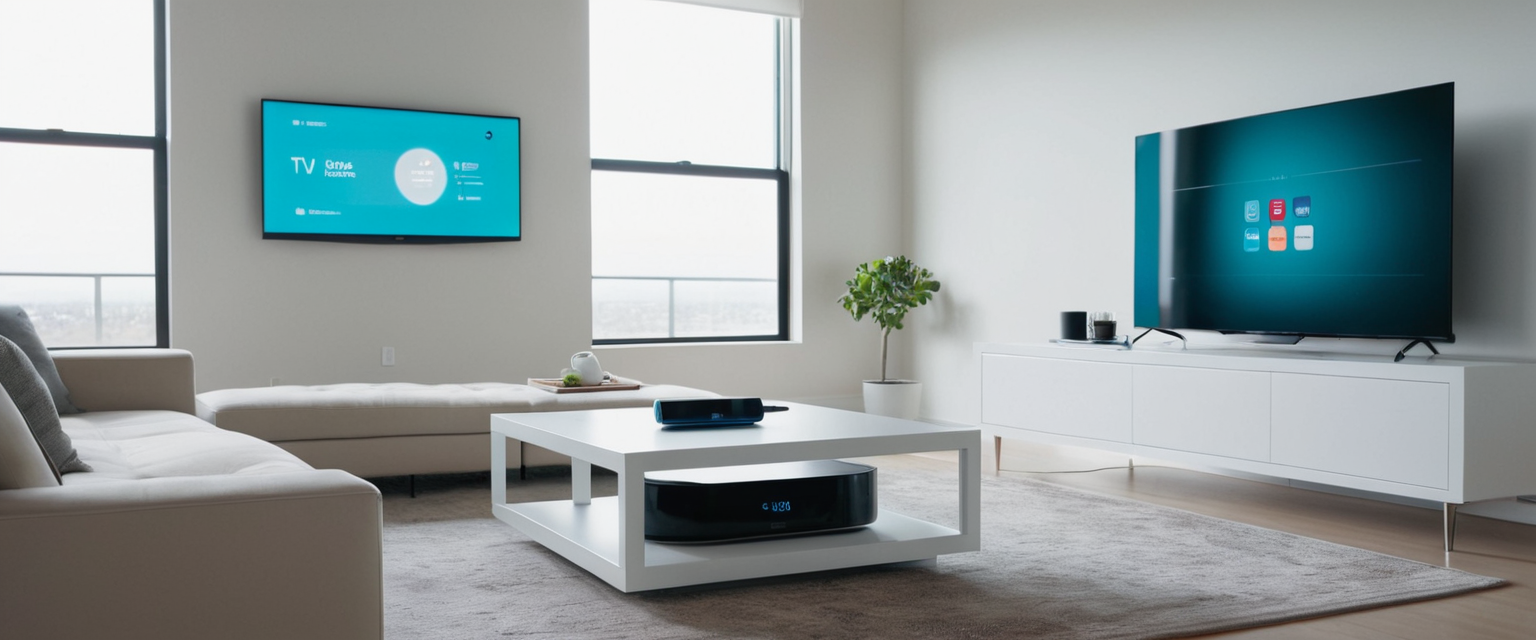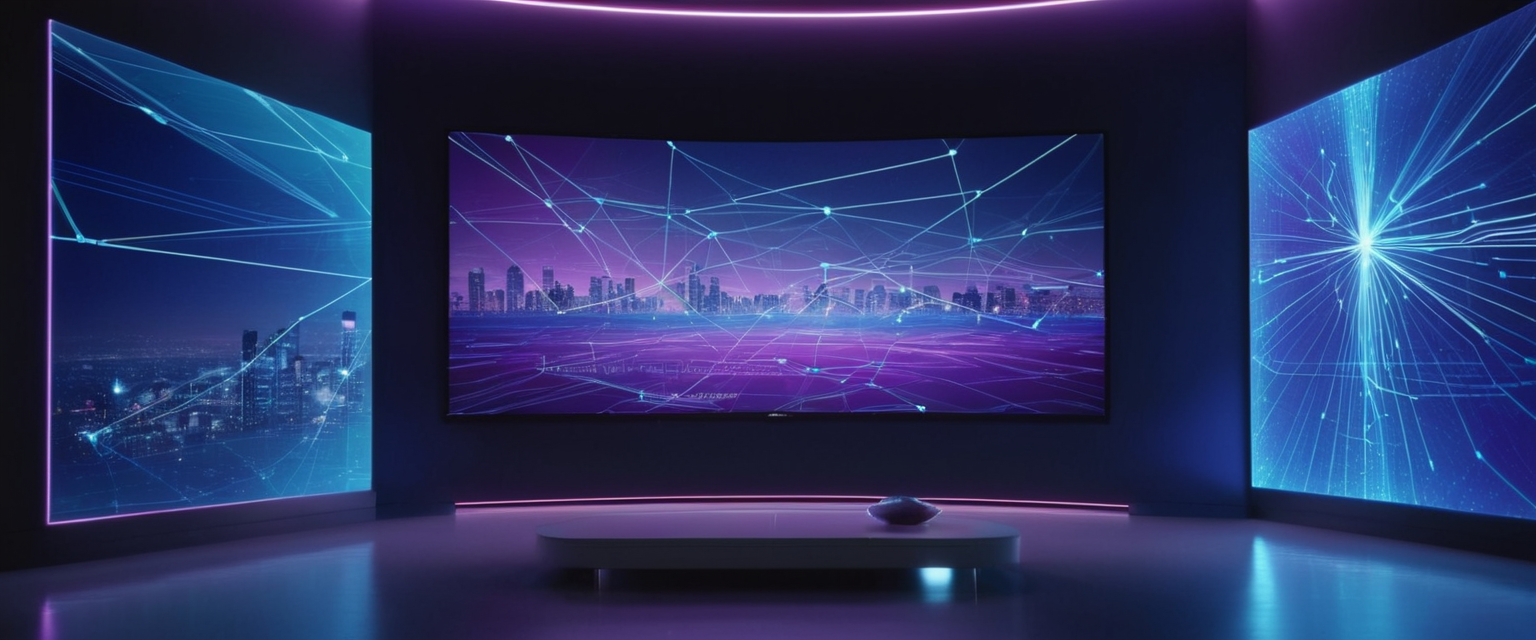
Recent research has revealed that modern smart televisions have transformed from passive displays into sophisticated surveillance and advertising delivery platforms, with automatic content recognition technology capturing viewing data multiple times per second, third-party vendors collecting information without clear user consent, and manufacturers implementing deliberately complex opt-out mechanisms that obscure the true extent of data collection and monetization occurring in American and global homes. This comprehensive analysis examines the technological infrastructure underlying connected TV advertising, the privacy implications of pervasive data collection, the regulatory frameworks attempting to constrain these practices, and the technical and consumer-oriented methods available to users seeking to protect their privacy and reduce unwanted advertising exposure.
The Transformation of Smart TV Business Models: From Hardware Sales to Data Monetization
The television manufacturing industry has undergone a fundamental business model transformation over the past decade, shifting from a primary reliance on device sales to increasingly aggressive data collection and advertising revenue generation. This transition has been driven by declining hardware profit margins and the recognition that connected devices provide unprecedented access to intimate consumer behavior patterns within the home environment. Television manufacturers including Samsung, LG, Vizio, and Roku have all embraced advertising as a core revenue stream, with some companies now losing money on hardware sales specifically to acquire users whose viewing data and attention can be monetized through advertising and third-party data sales.
The economics of this transformation are striking: research firm Omdia has documented that companies like Vizio and Roku are selling televisions at negative margins between negative three and negative seven percent, accepting hardware losses in exchange for access to user behavioral data and the ability to display targeted advertisements. This business model is particularly pronounced in North America, where competitive pricing pressure has intensified dramatically, with large televisions now frequently available below one hundred dollars. To sustain profitability under these circumstances, manufacturers have no choice but to pursue alternative revenue streams. Smart TV advertising revenue is estimated to reach significant figures globally, with one analysis suggesting the market could grow by twenty percent annually, creating powerful financial incentives for aggressive data collection and ad placement.
This economic imperative has created what might be termed an “advertising-subsidized television ecosystem.” Just as free-to-air television and cable channels have historically relied on advertising to offset production costs, modern smart TVs now function as advertising delivery platforms where the device itself is either free or deeply discounted, with the actual monetization occurring through continuous data collection and ad exposure. The parallel extends further: just as traditional television viewers developed tolerance for commercial interruption as an implicit trade-off for content access, smart TV manufacturers are betting that consumers will accept increasingly intrusive data collection and ad placement as the cost of affordable hardware.
The rise of free ad-supported streaming television (FAST) channels has further accelerated this trend, creating an ecosystem where content consumption is increasingly mediated through targeted advertising. These platforms, including services like Tubi, Pluto TV, The Roku Channel, and Samsung TV Plus, aggregate linear television programming and offer it freely to consumers in exchange for viewing advertisements. Notably, this model has proven remarkably successful, with streaming representing 43.8% of overall television viewing in the United States as of March 2025, a ten-percentage-point increase over just two years. The FAST ecosystem generated approximately 1,943 distinct linear channels across major platforms as of May 2024, indicating explosive growth in the ad-supported streaming segment.
Technical Architecture of Automatic Content Recognition and Data Collection Infrastructure
At the technological heart of smart TV data collection lies automatic content recognition (ACR), a sophisticated fingerprinting technology that enables real-time identification of video content playing on connected devices. ACR technology operates through several complementary mechanisms that work in concert to create detailed viewing profiles. The fundamental technique involves capturing audio and video samples from the content displayed on a television screen and comparing these samples against a reference database of known media content through fingerprinting algorithms that are robust to variations in encoding, compression, and transmission.
The technical sophistication of ACR implementations revealed by recent academic research demonstrates the extent to which television manufacturers have invested in surveillance capabilities. A study published by researchers from University College London investigating Samsung and LG televisions found that ACR technology captures screenshots of displayed content many times per second—far exceeding the 60 hertz refresh rate of modern high-definition displays. This extraordinarily high sampling rate raises significant questions about the actual data being collected beyond visible video content. The study examined both Samsung and LG devices connected to dedicated internet monitoring equipment and found that both manufacturers’ televisions transmit continuous streams of fingerprinted content data to external servers, with the volume of transmitted data substantially exceeding what these companies subsequently disclosed in response to General Data Protection Regulation requests.
The two primary fingerprinting methodologies employed in ACR systems represent different technical approaches to content identification. Acoustic fingerprinting generates unique identifiers from audio content itself, creating compression-resistant signatures that survive transcoding and format conversion across various networks and broadcast channels. This technique has powered applications including Shazam music recognition, as well as the extension of such technology to television content identification beginning in 2011. Video fingerprinting employs comparable methodology but adapted for visual content, enabling identification of televised material through frame-by-frame analysis. These fingerprinting approaches contrast with digital watermarking, an alternative methodology in which invisible or inaudible tags are embedded within content streams during distribution, though watermarking approaches require manufacturer cooperation at the content creation or distribution level.
Beyond ACR’s content recognition capabilities, smart televisions collect substantially broader categories of user data that extend well beyond simple viewing history. Modern smart TVs record information regarding device usage patterns, geographic location, demographic characteristics, and behavioral patterns that can be correlated with other data sources to construct detailed consumer profiles. This data collection encompasses not only content viewed directly on the television itself but, critically, content displayed through external devices connected via HDMI connections. The UCL research demonstrated that ACR systems capture and fingerprint content from external devices such as laptops connected to televisions through HDMI cables, potentially exposing streaming service usage, personal browsing activities, and other sensitive information that users may have assumed would remain private within their external devices.
Television manufacturers have implemented increasingly complex mechanisms to obscure the true nature and extent of ACR tracking. Samsung labels this capability as “Viewing Information Services,” terminology that provides little indication that the system involves comprehensive frame-by-frame content capture and real-time transmission to external servers. LG similarly obscures ACR through opaque terminology and has implemented the technology through third-party providers like Alphonso, the company that manages LG Ad Solutions. The deliberate obfuscation of ACR functionality represents what security researchers and consumer advocates have identified as a “dark pattern”—a user interface design choice that deliberately makes privacy-protective options difficult to discover or utilize.
Privacy Implications and Comprehensive Data Collection Practices
The scope of data collection undertaken by smart television manufacturers extends far beyond simple viewing information to encompass intimate details of users’ lives that raise profound privacy concerns. Television manufacturers have assembled sophisticated data collection infrastructure that gathers viewing history, channel switching patterns, application usage, location information, device identifiers, demographic characteristics, and behavioral patterns that enable detailed consumer profiling and prediction.
The particular invasiveness of smart TV data collection stems from the unique position televisions occupy within homes. Unlike smartphones or computers that users consciously activate and manage, televisions often remain constantly connected to home networks with ambient awareness of all activity visible on the screen. This continuous passive monitoring creates what might be termed “ambient surveillance”—persistent, background tracking of activities that users may not consciously associate with data collection. The television collects information about what content is displayed, who is watching, how long they watch, and through integration with external devices and services, increasingly detailed information about users’ interests, relationships, health status, and personal circumstances.
A critical dimension of smart TV data collection involves the integration of ACR-derived viewing information with demographic and behavioral data from third-party sources. Television manufacturers and their advertising partners append demographic information including age, gender, income, marital status, household size, education level, home ownership status, and estimated household value to viewing data collected through ACR. This demographic enrichment enables advertisers to construct highly granular audience segments and deliver targeted advertising with remarkable precision. The process represents what privacy researchers term “profiling”—the compilation of detailed information dossiers about individuals designed to infer interests and predict behavior through correlation with other data sources and profiles.
The Vizio case provides concrete documentation of how television manufacturers monetize viewing data. The Federal Trade Commission’s 2017 settlement with Vizio revealed that the company had collected viewing information on over eleven million consumer televisions beginning in February 2014 and had sold this information to third parties including data brokers and advertisers. Vizio had remotely installed ACR software on previously sold televisions and, beginning in August 2014, pre-installed this tracking capability on new devices with default-enabled settings. Critically, the company failed to provide clear, conspicuous notice of these practices, and the initial notification that appeared onscreen for some users merely indicated that a privacy policy change and “Smart Interactivity” feature had been enabled, without explicitly disclosing that comprehensive viewing data collection was occurring.
The discovery that smart televisions transmit data to multiple external parties represents a substantial expansion of data exposure beyond what users might reasonably anticipate. Research examining Samsung and LG televisions found that these devices contact multiple domains controlled by third-party data collection companies. LG televisions contact a single domain belonging to Alphonso when ACR is enabled, while Samsung televisions contact multiple ACR-related domains, all controlled by Samsung. Furthermore, streaming services including Netflix have been documented receiving viewing information from connected televisions and streaming devices even when users had never configured those services on the devices in question, suggesting that data transmission occurs independently of explicit user accounts or configurations.
The scale of data transmission from smart televisions to external servers represents an often-overlooked dimension of the surveillance concern. One detailed analysis documented that smart televisions generate approximately sixty megabytes of outgoing internet traffic daily on average, with substantial variation depending on specific usage patterns and manufacturer implementations. This extraordinary data volume raises questions about what specific information justifies such transmission and suggests that ACR data may be supplemented by additional telemetry, behavioral tracking, and surveillance mechanisms beyond simple content fingerprinting.

Regulatory and Legal Framework for Smart TV Data Collection
The regulatory landscape governing smart television data collection remains fragmented and inadequately protective of consumer privacy, though some legal frameworks have begun to establish constraints on manufacturer practices. The General Data Protection Regulation, which applies to European Union citizen data regardless of where processing occurs, requires explicit user consent before data collection, mandates transparency regarding processing purposes, and grants individuals rights to access, correct, and delete their personal information. However, implementation and enforcement have proven inconsistent, with smart TV manufacturers sometimes providing vague responses to GDPR requests that substantially understate the actual volume and nature of data collection.
The Federal Trade Commission has pursued limited enforcement actions against particularly egregious smart TV manufacturers. The 2017 Vizio settlement required the company to pay $2.2 million and imposed requirements for prominent disclosure of data collection practices, express affirmative user consent before collection and sharing, data deletion obligations, and implementation of comprehensive privacy programs with biennial assessments. While this settlement represented a significant enforcement action, it notably did not establish binding industry-wide standards, nor did it fundamentally alter the business models pursued by other manufacturers. Indeed, Samsung, LG, and Roku have continued implementing ACR and other tracking mechanisms despite the Vizio precedent, suggesting that settlement terms have not effectively deterred industry-wide adoption of aggressive data collection practices.
Recent Federal Trade Commission enforcement actions have identified broader problems in smart device manufacturer practices. An FTC study examining 184 different smart products ranging from hearing aids to security cameras to door locks found that nearly 89% of manufacturers failed to prominently disclose information about how long devices would receive security updates. This failure to provide security update duration information raises particular concerns because devices without regular security patching become increasingly vulnerable to compromise and may lose core functionality. The research suggested that manufacturers’ failure to provide this information may violate the Magnuson-Moss Warranty Act, which requires disclosure of written warranty terms prior to sale, and could also constitute deceptive practices under the FTC Act if manufacturers make express or implied representations about device usability.
The particular challenge in regulating smart TV data collection stems from the complexity of identifying who bears responsibility for specific practices. Smart televisions often incorporate operating systems, tracking technologies, and advertising services developed by multiple parties—television manufacturers including Samsung and LG, operating system providers like Google (through Android TV and Google TV), Roku, and Amazon (through Fire TV), and specialized third-party data collection companies including Alphonso, Samba TV, and others. When data collection occurs through third-party services, determining whether manufacturers, service providers, content platforms, or all parties bear responsibility for disclosure and user consent becomes complicated.
The United Kingdom’s Information Commissioner’s Office has begun developing guidance specifically addressing Internet of Things consumer protection, including smart televisions. The guidance, scheduled for consultation during Winter 2024-2025, represents an attempt to establish clearer standards for IoT manufacturer practices regarding data collection, transparency, and user consent. However, the guidance remains in developmental stages, and it remains unclear whether it will establish sufficiently stringent requirements to meaningfully constrain manufacturer behavior.
State-level privacy legislation in the United States, including California’s Consumer Privacy Act and similar laws, provides some privacy protections but often include significant exemptions and limitations that reduce their effectiveness for smart TV regulation. The CCPA grants California residents rights to know what personal information is collected, to delete collected information, and to opt out of information sale or sharing, but exemptions for certain business-to-business data sharing and aggregated information limit the law’s scope.
Mechanisms for Ad and Tracker Blocking on Connected Televisions
Consumers seeking to protect their privacy and reduce advertising exposure on smart televisions face a complex and evolving landscape of potential approaches, ranging from adjusting device settings to implementing network-level blocking mechanisms. Understanding the technical capabilities and limitations of different blocking approaches is essential for developing an effective privacy strategy.
The most straightforward approach to reducing smart TV data collection involves accessing device-specific privacy settings and disabling ACR and related tracking features. However, this approach confronts significant practical obstacles rooted in manufacturer design choices. Television manufacturers have deliberately implemented settings menus that obscure privacy controls, require users to navigate through multiple sub-menus accessed through counter-intuitive paths, and employ terminology that conceals the true function of tracking systems. Consumer Reports’ comprehensive analysis of privacy controls across major smart TV brands reveals that accessing ACR disabling controls requires users to navigate through multiple levels of settings, with different manufacturers implementing different terminology and menu structures.
For Amazon Fire TV devices, users must access Settings > Preferences > Privacy Settings, where they encounter options for Device Usage Data, Collect App and Over-the-Air Usage, and Interest-Based Ads, all enabled by default. Disabling these options reduces data collection, though Amazon notes that disabling Over-the-Air Usage collection will not affect data collection related to Amazon services or Fire TV Recast devices. A 2025 addition allows users to prevent third-party apps from sending viewing information through the “Manage Sharing From Apps” option.
Google TV devices present comparable challenges, with privacy controls distributed across Google’s broader ecosystem and individual television manufacturer settings. Users must access Settings > Privacy > Ads to reset advertising IDs or delete collected information, but this only partially constrains Google’s data collection infrastructure. Individual TV manufacturers using Google TV, including TCL and Sony, implement additional privacy policies and controls, requiring users to navigate multiple separate consent interfaces.
Samsung televisions conceal ACR controls within a deliberately obscure settings structure. The company labels ACR as “Viewing Information Services” and places controls within Privacy Choices screens accessed through multiple menu levels. On 2025 Samsung models, users must navigate to Smart Hub Terms and Conditions and Privacy Policy screens to locate options for disabling Viewing Information Services, Interest-Based Advertisements, and the Samsung Art Store. The company also provides a “Do Not Sell or Share My Personal Information” option at the bottom of the settings page.
LG televisions implement comparable obfuscation, with ACR controls labeled as “Viewing Information” and initially presented as disabled by default, though users must affirmatively uncheck ACR-related settings that are pre-selected. The company requires users to accept various terms and conditions to access these controls, and disabling ACR functionality specifically disables the LG Live Plus feature that provides program recommendations.
Despite the availability of device-specific privacy controls, research has documented that these mechanisms remain inadequately disclosed and difficult to utilize for typical users. The deliberate complexity of access paths, obscure terminology, and bundling of privacy settings with content features that users may value create what consumer protection advocates term “dark patterns“—design choices that make desired user actions (in this case, privacy protection) difficult or inconvenient to execute.
Network-Level and DNS-Based Ad Blocking Approaches
A more comprehensive approach to smart TV ad and tracker blocking involves network-level interventions that block domains and IP addresses associated with advertising and tracking infrastructure. This approach offers several advantages over device-specific privacy settings: it applies to all devices on a network regardless of individual device capabilities, it can block advertising infrastructure regardless of whether manufacturers have implemented opt-out controls, and it provides centralized management of filtering rules across all connected devices.
Network-level DNS filtering represents the most accessible and non-technical network-level blocking approach. Domain Name System filtering operates by intercepting DNS queries—requests to translate human-readable domain names like “samsungads.com” into the IP addresses necessary to establish network connections—and refusing to resolve domains associated with advertising, tracking, or privacy-invasive services. When a smart television or other device attempts to contact an advertising or tracking domain, a DNS filter simply returns no result or a false result, preventing the connection from establishing. This approach is transparent to end users—devices receive no notification that a connection was blocked, they simply fail to reach the intended destination.
Multiple DNS filtering services have emerged to provide this capability. AdGuard DNS represents one widely-used option, providing both free and premium services with configurable filtering levels. AdGuard DNS operates at the cloud level, intercepting and filtering DNS queries before they leave a user’s network. The service provides multiple filtering options including ad blocking, family protection, and custom rules. Users can configure their television’s network settings to use AdGuard DNS servers rather than the default DNS servers provided by their Internet Service Provider, typically involving navigation to network settings, selection of static IP address configuration, and manual entry of AdGuard’s DNS server IP addresses.
Pi-hole represents an alternative DNS-level filtering approach that provides network-wide ad blocking capabilities through self-hosted infrastructure. Rather than relying on a third-party DNS service, users can deploy Pi-hole on a local network device such as a Raspberry Pi computer or Docker container, allowing the device to intercept DNS queries from all connected devices and filter them according to administrator-configured rules. Pi-hole provides a web-based interface for configuring filtering rules, reviewing query logs, and managing whitelist and blacklist entries. The self-hosted approach offers advantages including complete control over filtering rules and query logs but requires more technical expertise and infrastructure investment than cloud-based DNS filtering services.
However, DNS-level filtering confronts an increasingly significant technical limitation rooted in device manufacturer behavior. Research has documented that approximately 98% of smart assistants and 72% of smart televisions employ hardcoded DNS servers such as Google’s public DNS service (8.8.8.8) rather than using DNS servers assigned by home networks through DHCP. These hardcoded DNS configurations bypass network-level DNS filtering entirely, with televisions and other devices stubbornly attempting to resolve DNS queries through manufacturer-specified servers regardless of network configuration. This practice effectively neutralizes network-wide DNS filtering approaches for a substantial portion of smart devices unless additional firewall-level interventions are implemented.
Overcoming hardcoded DNS implementations requires more sophisticated network-level intervention. Network administrators can implement firewall rules that intercept DNS queries destined for public DNS servers and redirect them through local DNS filtering infrastructure. This approach, commonly implemented through technologies like pfSense firewalls or similar router firmware, involves creating network address translation (NAT) rules that catch all DNS traffic attempting to exit the network through standard DNS ports (53 and 853) and redirect it to a local DNS server running Pi-hole or comparable filtering software. The redirection is transparent to devices—from their perspective they successfully contacted the DNS server they were configured to use, but the responses they receive are actually coming from the local filtering infrastructure.
An emerging challenge involves DNS over HTTPS (DoH) and DNS over TLS (DoT), protocols that encrypt DNS queries and transmit them through HTTPS or TLS connections on port 443, bypassing standard DNS port-level firewall rules. Devices configured to use DoH or DoT effectively tunnel their DNS queries through encrypted HTTPS connections that firewalls cannot selectively intercept without breaking encryption. Mitigating DoH/DoT-based circumvention requires identifying IP addresses of known public DoH providers and implementing firewall rules that block outbound connections to these addresses entirely, a maintenance-intensive approach that requires continuous updates as new DoH services and IP address ranges emerge.

Device-Specific Guidance and Manufacturer Implementations
Understanding the specific privacy controls and data collection practices of individual smart TV manufacturers is essential for consumers implementing privacy strategies. The major manufacturers—Samsung, LG, Sony, Roku, Amazon (Fire TV), Google (Android TV/Google TV), and others—implement substantially different data collection and control mechanisms, requiring users to navigate distinct menu structures and terminology.
Samsung Smart Televisions implement comprehensive data collection through multiple mechanisms including ACR (labeled “Viewing Information Services”), interest-based advertising, and cross-device advertising tracking. Samsung provides privacy controls accessible through Settings > Smart Hub Terms and Conditions and Privacy Policy, where users can toggle individual data collection features. On 2025 models, users can access the Privacy Center to review how different services collect and share data. However, Samsung’s default configuration enables these tracking features, requiring active user intervention to disable them. The company also allows users to select “Do Not Sell or Share My Personal Information” to limit third-party commercialization of viewing data, though this does not eliminate Samsung’s own use of collected information.
LG Smart Televisions use webOS platform and collect data through multiple mechanisms including Viewing Information (which provides ACR functionality), Voice Information (for voice command processing), and Interest-Based & Cross-Device Advertising. LG’s privacy controls are accessed through Settings > All Settings > Support > Privacy & Terms, where users can review and modify User Agreements. Unlike some competitors, LG’s ACR and other tracking features default to disabled state during initial setup, though users must affirmatively uncheck settings to maintain this protection. LG’s Live Plus feature, which provides program recommendations, requires ACR to function, creating a choice between receiving personalized recommendations or maintaining privacy.
Sony Televisions implement data collection through both Google TV (on newer models) and Android TV (on older models) infrastructure, with additional ACR functionality provided through Samba TV. Users must navigate through Sony’s Bravia privacy policy during setup and can choose to accept or decline Sony’s data collection practices and Samba TV ACR services. Samba TV implementation can be toggled on or off in Settings > All Settings > Samba Interactive TV, providing users with granular control. However, Sony televisions also incorporate Google’s broader data collection infrastructure, which users cannot entirely opt out of while maintaining smart TV functionality.
Amazon Fire TV devices collect data through Device Usage Data, App and Over-the-Air Usage monitoring, and Interest-Based Ads features, all enabled by default. Users can disable these features individually through Settings > Preferences > Privacy Settings. A 2025 feature, “Manage Sharing From Apps,” allows users to prevent third-party apps from transmitting viewing information.
Google TV and Android TV devices collect data through Google’s broader ecosystem including search queries, video viewing, ads viewed, and purchase activity. Google claims that Google TV does not employ ACR technology itself, though individual manufacturers may implement ACR through third-party providers. Users cannot entirely opt out of Google’s data collection while using smart TV features, though they can disable specific data collection categories and personalized advertising through Settings > Privacy settings.
Alternative Streaming Approaches and Device Substitution
Consumers seeking more comprehensive protection from smart TV surveillance and advertising have begun exploring alternative approaches including external streaming devices and complete device substitution. These approaches acknowledge that despite the availability of privacy controls and network-level filtering, manufacturer-implemented tracking and advertising mechanisms remain fundamentally difficult to fully disable through settings alone.
Apple TV represents the most prominent alternative streaming device that prioritizes privacy over data monetization. Apple has confirmed that Apple TV devices do not employ ACR technology, do not display advertisements on home screens or screensavers (unlike Roku OS and Samsung’s webOS), and provide privacy-first setup processes allowing users to disable Siri, location services, and analytics. While Apple does collect user data, the company implements anonymization and aggregation that prevents personal information from being shared with Apple itself. Furthermore, tvOS applications must request permission to track users, similar to iOS app permissions, with users able to reject tracking requests or universally disable app-based tracking.
However, using external streaming devices such as Apple TV does not entirely eliminate data collection risks on smart televisions. Even when streaming through external devices, the underlying television continues to monitor content displayed through HDMI connections via ACR, potentially allowing the television to capture viewing information about content played through external devices. To fully mitigate smart TV surveillance while using external devices requires both disabling ACR on the television itself and potentially disconnecting the television from internet connectivity entirely.
Disconnecting smart televisions from internet connectivity represents an extreme but effective privacy approach. Users can simply prevent televisions from connecting to Wi-Fi networks, effectively converting sophisticated smart devices back into “dumb” displays that cannot communicate with external servers. This approach entirely eliminates data transmission from smart televisions while preserving their display functionality. However, this strategy comes with significant trade-offs: it prevents access to streaming applications, eliminates the ability to receive software security updates, may prevent certain features like picture calibration that depend on internet connectivity, and may trigger error messages or connection validation failures requiring periodic internet connection to restore device functionality.
For users pursuing comprehensive privacy strategies, a combination approach may be optimal: using an external streaming device such as Apple TV for streaming content, disabling ACR and related tracking on the underlying television through device settings, and implementing network-level DNS filtering to catch any remaining tracking attempts. This layered approach addresses multiple dimensions of smart TV surveillance while maintaining reasonable device functionality.
Broader Internet of Things Privacy Implications
While smart televisions represent the most visible and accessible entry point to understanding IoT device privacy threats, the broader Internet of Things ecosystem encompasses diverse connected devices that implement comparable data collection and tracking mechanisms. Understanding smart TV privacy challenges provides important context for evaluating privacy risks across the full spectrum of connected devices now proliferating throughout homes and workplaces.
Smart speakers including Amazon Echo devices, Google Home, and Apple HomePod represent particularly privacy-invasive IoT devices due to their always-listening microphones and integration with voice-activated assistants that enable continuous monitoring of background conversations. These devices record voice commands and surrounding audio, transmitting this data to cloud servers for processing. Research has documented that voice data collected by smart speakers is used to infer user interests and build consumer profiles that inform targeted advertising, with data potentially shared with numerous advertising partners, creating concerning possibilities for unauthorized surveillance and privacy violations.
Smart home security cameras, doorbells, thermostats, and other connected devices similarly collect and transmit potentially sensitive data regarding inhabitant behavior, schedules, health conditions, and personal activities. The interconnected nature of smart home systems means that compromising a single device can potentially provide unauthorized access to an entire home network, allowing attackers to monitor behavior, disable security systems, or unlock smart locks.
Broader research on IoT device privacy threats has identified fundamental challenges that extend far beyond smart televisions and speakers. Profiling—the compilation of detailed information dossiers about individuals designed to enable behavioral prediction and targeting—represents a core business practice for many IoT manufacturers. These practices often occur with insufficient transparency or user consent, particularly as devices transmit data to multiple third-party vendors whose roles and relationships users may not fully understand.
The Internet of Things poses particular privacy challenges because these devices often lack robust security measures, update mechanisms, and security patching capabilities. Unlike smartphones or computers that manufacturers continuously update with security patches, many IoT devices receive minimal support and rapidly become vulnerable to exploitation. Furthermore, the interconnected nature of IoT means that compromised devices can serve as entry points to attack broader network infrastructure, as demonstrated by the 2016 Mirai botnet attack that weaponized millions of compromised IoT devices to launch massive distributed denial-of-service attacks.
Privacy-preserving approaches for IoT devices more broadly align with strategies developed for smart TV privacy protection. Network segmentation, where IoT devices are isolated from critical home network resources through VLANs and firewall rules, can limit the damage potential if a device becomes compromised. DNS filtering, firewall rules, and connection monitoring can help constrain data transmission from IoT devices. Careful evaluation of manufacturer privacy policies and device security practices before purchase can help users make informed decisions about which devices to allow into their networks.
However, systemic IoT privacy challenges ultimately require regulatory intervention rather than solely relying on individual consumer action. The Federal Trade Commission has recommended that IoT manufacturers implement “secure by design” principles, including memory-safe programming languages, rigorous security testing, and secure access controls. The agency has also emphasized the importance of transparent privacy practices, meaningful user consent, and strong data minimization—collecting only information necessary for specific disclosed purposes rather than gathering comprehensive behavioral data for future monetization.

Emerging Trends and Future Landscape of Connected TV Advertising
The connected television advertising landscape continues to evolve rapidly, with manufacturers implementing increasingly sophisticated mechanisms to monetize viewer data and deliver targeted advertising. Understanding these emerging trends provides important context for anticipating future privacy challenges and implementing proactive protective measures.
The growth of connected TV and over-the-top streaming advertising has accelerated dramatically, with global connected TV advertising spending projected to reach approximately $46.3 billion in 2026. Streaming has come to represent 43.8% of overall television viewing time in the United States as of March 2025, an increase of ten percentage points in just two years, fundamentally reshaping the advertising landscape. This shift has accompanied a massive expansion of free ad-supported streaming television platforms (FAST), which have evolved from niche offerings to mainstream viewing alternatives, with nearly 1,943 distinct linear channels available across major platforms as of mid-2024.
Advertisers increasingly recognize that connected television provides unprecedented targeting and measurement capabilities compared to traditional broadcast television. The ability to target specific demographic groups and audience segments based on verified viewing patterns and behaviors represents a substantially more sophisticated approach than traditional television’s demographic targeting based on program content assumptions. Furthermore, connected TV advertising enables attribution of offline behavior to advertising exposure through integration with retail point-of-sale systems and other data sources, allowing advertisers to measure actual purchase behavior driven by television advertising rather than relying solely on viewership measurement proxies.
The concentration of connected TV ad spending in the hands of a few dominant platforms—Amazon Fire TV, Roku, Samsung, LG, Google TV, and others—creates concerning implications for user privacy and competitive dynamics. Amazon’s Fire TV platform in particular has emerged as a major advertising revenue driver for the company, with Amazon investing heavily in new ad formats and expanding advertiser access to high-impact placements on Fire TV home screens. Amazon’s ownership of Prime Video, integration with Alexa voice assistants, and access to comprehensive customer shopping data positions the company to pursue integrated advertising strategies that span television, audio, voice interaction, and online shopping behaviors.
The emergence of new smart TV operating systems and platforms continues to reshape the competitive landscape while maintaining universal emphasis on advertising monetization. Trade Desk, a major programmatic advertising technology company, has announced plans to launch its own operating system for smart televisions beginning in 2025, recognizing the strategic importance of controlling the interface through which consumers access video content. This proliferation of platforms ensures that consumers encounter numerous manufacturers implementing aggressive data collection and advertising practices rather than standardization around a smaller set of platforms with potentially more uniform privacy practices.
The Connected Home: Where Ad Tech Lives
The analysis of advertising technology and ad-blocking approaches for smart televisions and broader IoT devices reveals a fundamental misalignment between manufacturer incentives to maximize data collection and advertising revenue and consumer interests in privacy, data security, and freedom from pervasive surveillance. While individual consumers have access to a growing toolkit of privacy-protective measures—device-specific privacy controls, network-level DNS filtering, external streaming device alternatives, and network segmentation strategies—the underlying business model dynamics driving smart TV manufacturers toward aggressive data collection and advertising appear fundamentally resistant to individual-level countermeasures.
The transformation of television from display technology to surveillance and advertising delivery platform represents a significant expansion of commercial monitoring into the home environment, arguably the space where individuals most reasonably expect privacy. Unlike smartphones or computers that users actively engage with and consciously manage, televisions represent more passive, ambient technology integrated into living spaces where users may not consciously associate their behavior with data collection or surveillance. The deliberate obscuring of privacy controls through dark patterns, opaque terminology, and complex settings navigation further exacerbates the power imbalance between manufacturers armed with sophisticated data collection infrastructure and typical consumers navigating privacy settings designed to discourage their use.
Regulatory frameworks have begun to address smart TV privacy concerns but have so far proven inadequate to the scale and sophistication of manufacturer practices. The Federal Trade Commission’s Vizio settlement established important precedents regarding disclosure obligations and user consent requirements but failed to prevent subsequent manufacturers from implementing comparable tracking and advertising practices. European Union GDPR requirements have provided stronger privacy protections in principle but continue to encounter implementation and enforcement challenges, with manufacturers sometimes providing evasive responses to GDPR requests and continuing to collect far more data than they subsequently acknowledge.
More fundamentally, current regulatory approaches have not addressed the underlying business model transformation that created the financial incentives for aggressive smart TV data collection. As long as television manufacturers face margin pressures on hardware and can generate substantially higher profits through advertising and data monetization, the structural incentives to collect comprehensive user behavioral data will persist. Meaningful regulatory reform would likely need to address this business model directly through approaches such as restricting certain categories of data collection, requiring revenue-sharing mechanisms where manufacturers monetize consumer data, or establishing baseline privacy protections that manufacturers cannot override regardless of financial considerations.
For individual consumers, the most practical approach to smart TV privacy involves layered protection strategies combining device-specific privacy controls, network-level filtering, and potentially device substitution or disconnection. However, the recognition that individual technical countermeasures remain necessary despite regulatory frameworks and manufacturer privacy policies underscores the inadequacy of current approaches to IoT privacy protection. As the Internet of Things continues to proliferate, encompassing increasingly intimate aspects of daily life from entertainment viewing to health monitoring to home security, establishing more robust baseline privacy protections and meaningful enforcement mechanisms becomes increasingly essential to prevent pervasive surveillance from becoming a universal and inescapable feature of connected home environments.
Protect Your Digital Life with Activate Security
Get 14 powerful security tools in one comprehensive suite. VPN, antivirus, password manager, dark web monitoring, and more.
Get Protected Now





